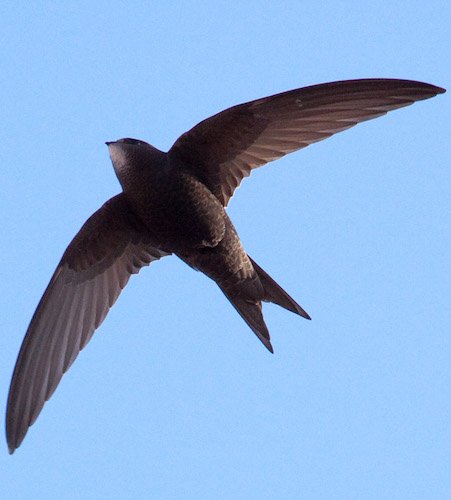Saxony-Anhalt

Birding Saxony-Anhalt
Saxony-Anhalt is one of the sixteen Bundesländer (federal states) that make up the Federal Republic of Germany. It has an area of 20,447 square kilometres (7,895 sq mi), and a population of 2.45 million (more than 2.8 million in 1990). Its capital is Magdeburg.
Saxony-Anhalt is one of 16 states in the Federal Republic of Germany. It covers a total area of 20,445 km² (12,676 sq. miles). By size, it is the 8th largest state in Germany, and by population, the 10th largest. It borders the states of Brandenburg, Saxony, Thuringia and Lower Saxony.The capital of Saxony-Anhalt is Magdeburg. It is the second largest city in the state, after Halle. Nearby is the city of Dessau, where the ‘Bauhaus’ is located. The Bauhaus provided a basis for the field of architecture and fine arts in the area. Dessau is also home to the opulent Dessau-Wörlitz Garden Realm. The city’s main attraction is the Wörlitzer Park which is part of the UNESCO World Heritage Site.The landscape of Saxony-Anhalt is quite varied. From the region of Altmark in the north, the state extends from the Magdeburg region, a vast lowland, through the Harz, a low mountain range, until one comes to Thuringia. The highest mountain in the vicinity is Brocken, with an elevation of 1,141 meters (3,735 ft). Below the summit, the National Park Harz forms an extensive wildlife sanctuary.
-
Number of bird species: 303
(As at march 2019)State Bird - Common Swift Apus apus
-
BiR Kelbra Dam WII IBA
InformationSatellite ViewThe reservoir is of international importance as a result of the variety of birds found on and around its waters, which, in terms of species as well as sheer numbers exceeds those settling on comparable stretches of water. For example, the following birds can regularly be observed here: duck (e.g. mallard, teal, pochard), waders (peewit, snipe, redshank, curlew), divers (great crested grebe, little grebe, black-necked grebe), rails (water rail, coot), mute swan, black-headed gull and bittern (little bittern and Eurasian bittern). In addition white-tailed eagle, osprey, peregrine and cormorant may also be spotted here. The variety of birds occurring during migration is particularly impressive. Up to 10,000 crane stop over on the reservoir and large flocks of larks and finches may be seen passing through. Since 1978 the reservoirs has been placed under the protection of the Ramsar Convention as an internationally important retreat for birds. -
NR Alter Stolberg
InformationSatellite ViewIt lies in the districts of Nordhausen in the state of Thuringia and Mansfeld-Südharz. The northern part of the heavily forested ridge is designated as the Alter Stolberg Nature Reserve and large parts of it as the Alter Stolberg Protected Landscape. -
NR Bode Gorge
InformationSatellite ViewThe Bode Gorge ist also a habitat and refuge for many types of rare animal. Such rarities include the wildcat, Bechstein's bat, peregrine falcon, black stork, middle spotted woodpecker. The insect fauna is particularly varied. The white-throated dipper and grey wagtail can be observed hunting for insects on the stream beds. Mallard breed here and there in the reed beds or on remote gravel beds. In spring fire salamanders can be seen splashing about in the Bode Gorge during the spawning season. Care must be taken when walking not to disturb them. -
NR Brandberge
InformationSatellite ViewThe Brandberge is a protected natural area in Saxony-Anhalt, Germany, in the northwest of Halle. It is part of the Naturpark Unteres Saaletal, a protected landscape area which extends along the River Saale from Halle to Nienburg. The fauna is unusually varied, including the European hare, the European stonechat, the shrike, the diving bell spider and many kinds of amphibians and reptiles, such as the natterjack toad, northern crested newt and grass snake. Waders and songbirds use the area as a brooding site, raptors use the arable land as a source of prey, and the entire area has an extremely varied insect population including the scarce blue-tailed damselfly and small emerald damselfly. -
NR Brocken
InformationSatellite ViewThe Brocken, also sometimes referred to as the Blocksberg, is the highest peak of the Harz mountain range and also the highest peak of Northern Germany; it is located near Schierke in the German state of Saxony-Anhalt between the rivers Weser and Elbe. Several animal species have adapted to the conditions of life on the Brocken. For example, the water pipit (Anthus aquaticus) and the ring ouzel both breed in the area around the summit. -
NR Drömling
InformationSatellite ViewThe Drömling is a sparsely populated depression on the border of Lower Saxony and Saxony-Anhalt in Germany with an area of about 340 square kilometres (130 sq mi). The larger part belonging to Saxony-Anhalt in the east is a nature park. -
NR Großes Bruch
InformationSatellite ViewThe Großes Bruch is a 45 kilometres (28 mi) long wetland strip in Germany, stretching from Oschersleben in Saxony-Anhalt in the east to Hornburg, Lower Saxony in the west. The meadows are the residence and breeding areas of rare birds, including the hen harrier, Montagu's harrier, Eurasian curlew, short-eared owl, common snipe and corncrake. The little owl breeds in stands of pollarded willows.
